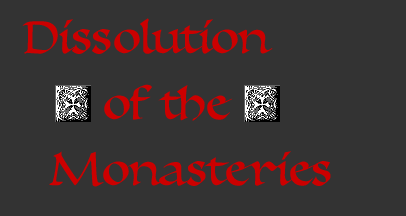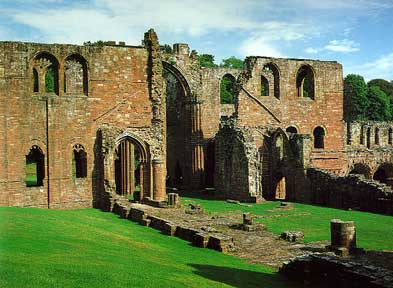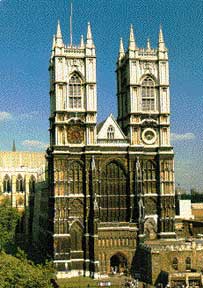|
|
|
|
|
|
|
|
|
|
|
|
|
|
|
|
|
|
|
|
|
|
|
|
|
|
|
|
|
 |
|
|
|
|
|
|
|
|
|
|
|
|
|
|
|
|
|
|
|
|
|
|
|
|
 |
|
|
|
|
|
|
|
Popular
religion of the 16th century was strongly visual and ritually active, which
was most apparent in shrines and pilgrimages. Henry
VIII's elimination of much of the traditional Medieval culture that infused
English religious life effected everyone. Shrines, relics,
images, indulgences and pilgrimages, along with most liturgical practices
fell victim to the reforming and were destroyed. The exhibiting of relics was
notorious and while the Medieval church attempted to control their display,
they also made a great deal of money off of the business. By 1536 the practice
of pilgrimage was banned and the Dissolution of the Monasteries had begun. |
|
|
|
|
|
|
Tintern Abbey, Monmouthshire. |
|
|
|
|
|
|
|
|
|
|
|
|
|
|
|
By
the sixteenth century the church was the largest land owner in England and extremely
affluent. Pilgrimages and offerings to relics had given them a steady income,
increasing their wealth and power. An inherent mistrust of the privileged clergy
was growing within the public, which aided and eventually led to their suppression
as the secularization of monastic possessions was what the lay people, both
royal and private, coveted. The monastic link to the Catholic church was considered
very strong and because of this, they were seen as opponents to the king. Between
1536 and 1539 the government was under the guidance of men who disapproved of
monasteries in principle and had better ideas for the usage of their wealth.
The crown was greedy for their revenue and the gentry desired their lands. Aristocrats
who purchased old monastic lands at bargain prices were more inclined to support
Henry and his causes. |
|
|
|
|
|
|
|
|
|
|
|
|
|
|
|
|
 |
|
|
|
|
|
Those
monastic buildings that were not sold to the nobility for use as country estates
became a source of inexpensive construction materials for local residents. Monasteries
all over England were stripped of their riches, disbanded and allowed to fall
into ruin. Generally, the monks and nuns of these religious houses were treated
well after the dissolution, with only a few protesters summarily executed. Monastic
libraries laden with invaluable illuminated manuscripts were destroyed with
scant regard for their importance or worth. Also affected were the pilgrimage
centers and routes that fell into irrevocable economic depression with no other
source of income to support themselves. |
|
|
|
|
|
|
|
|
|
|
|
|
|
|
|
|
Furness
Abbey, Cumbria |
|
|
|
|
|
|
|
|
|
|
|
|
|
|
 |
|
|
|
|
|
|
|
|
|
|
|
|
|
|
|
|
|
|
|
|
|
However,
while the papal connections to London's Westminster Abbey were severed, the
cathedral was not allowed to fall into ruins because of its royal tombs and
strong historical association with the monarchy. Westminster Abbey became another
symbol of the power and authority of royalty over the church. Religious houses
were considered the last bastion of popery in England and an obstacle to Henry's
religious reform. Not only did their dissolution add to the power and wealth
of the crown but it further strengthened Henry VIII's role as head of the Church
of England. |
|
|
|
|
|
|
|
|
|
|
|
|
|
|
|
|
|
|
|
|
 |
|
|
|
|
|
|
|
|
|
|
|
|
|
|
|
|
 |
|
|
 |
|
|
|
|
|
|
|
|
|
|
|
|
Westminster
Abbey, London |
|
|
|
|
|
|
|
|
|
|
|
|
|
|
|
|
|
|
|
|
|
|
 |
 |
 |
 |
 |
 |
 |
 |
 |
 |
 |
 |
 |
 |
 |
 |
 |
 |
 |
 |
 |
 |
 |
 |
 |
 |
 |
 |




